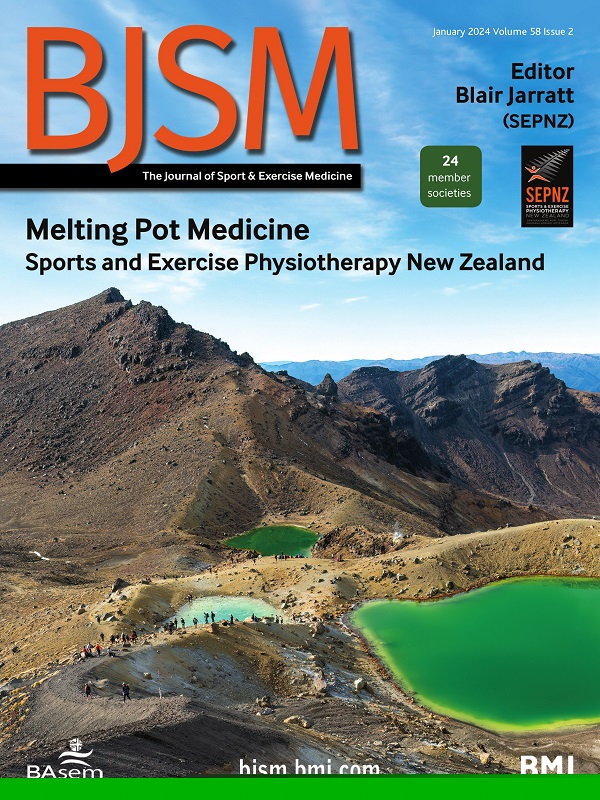Sociocultural constructs and sensorimotor control: a scoping review examining implications for anterior cruciate injury
IF 11.6
1区 医学
Q1 SPORT SCIENCES
引用次数: 0
Abstract
Objective There is a need to explore the many factors that may have a more subtle influence on, or relationship with, sensorimotor control as it pertains to anterior cruciate ligament injury risk. Due to well-established sex/gender-related differences in sensorimotor control, a close examination of key sociocultural constructs is warranted. This scoping review examined the connection between sociocultural constructs and sensorimotor control. Design Scoping review. Data sources The following databases were searched: PubMed, Embase, Scopus, CINAHL Complete, Academic Search Complete, Pre-Prints Database and Rehabilitation Reference Center from inception to September 2023. Additionally, relevant grey literature was identified. Eligibility criteria for selecting studies Two blinded reviewers independently performed screening, study selection and data extraction. Original references in English, Spanish and German reporting on sociocultural constructs and motor task performance were included. Results Data were extracted from 68 included articles. Stereotype threat, gender and race have been examined more than other sociocultural constructs. Sensorimotor control was assessed in upper and lower quarter tasks and physical activity (PA). Task assessment methods varied, often focusing on task completion or completion speed. It is evident that sociocultural constructs influence sensorimotor control, but the exact mechanism remains unclear. Conclusion Sociocultural constructs can influence sensorimotor control and PA. Future research should further explore this connection as it relates to biomechanical profiles associated with increased injury risk. Additionally, sociocultural construct inventory scores could be added to existing injury screening programmes to create a more gendered approach to risk mitigation. No data are available.求助全文
约1分钟内获得全文
求助全文
来源期刊
CiteScore
27.10
自引率
4.90%
发文量
217
审稿时长
3-8 weeks
期刊介绍:
The British Journal of Sports Medicine (BJSM) is a dynamic platform that presents groundbreaking research, thought-provoking reviews, and meaningful discussions on sport and exercise medicine. Our focus encompasses various clinically-relevant aspects such as physiotherapy, physical therapy, and rehabilitation. With an aim to foster innovation, education, and knowledge translation, we strive to bridge the gap between research and practical implementation in the field. Our multi-media approach, including web, print, video, and audio resources, along with our active presence on social media, connects a global community of healthcare professionals dedicated to treating active individuals.

 求助内容:
求助内容: 应助结果提醒方式:
应助结果提醒方式:


